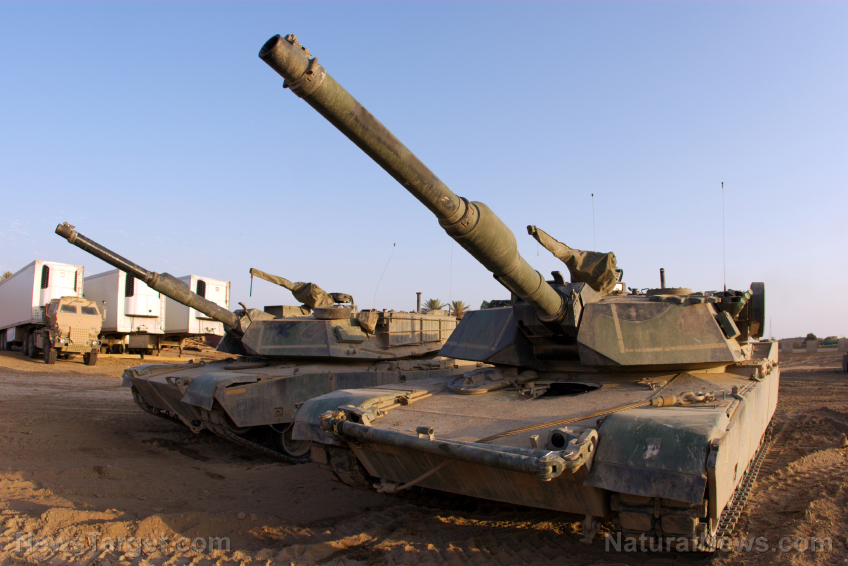 Parler
Parler Gab
Gab
Iran’s unprecedented attack on Israeli military sites on April 13-14 signals a tectonic shift in the regional balance of power. While the media remains preoccupied with the number of outdated Iranian drones that were shot down during the onslaught, military analysts are far more focused on the way that Iran’s ballistic missiles cut through Israel’s vaunted air defense systems striking sites at the Nevatim and Negev Air Bases.
(Article by Mike Whitney republished from Unz.com)
What the operation proved is that Israel’s “deterrents supremacy” is largely a fiction based on overly optimistic assumptions about the performance of their air defense capability. When put to the test, these systems failed to stop many of the larger and more destructive ballistic missiles from hitting their targets. This, in turn, revealed that Israel’s most heavily-defended and critically-important military sites remain overly-exposed to enemy attack.
More importantly, any future attack will not be announced days in advance nor will Iran attempt to avoid high-value targets or heavy casualties. Instead, they will use their most lethal and state-of-the-art hypersonic missiles to inflict as much death and destruction on Israel as is required to make sure that the Jewish state is unable to lift a hand against Iran in the future. In short, what Iran’s historic attack on Israel shows is that any future provocation by Israel will be met by an immediate and overwhelming response that will leave Israel battered, bloodied and broken. This is an excerpt from a recent article by former weapons inspector Scott Ritter:
Iran’s purpose in launching the attack was to establish a deterrence posture designed to put Israel and the United States on notice that any attack against Iran, whether on Iranian soil or on the territory of other nations, would trigger a retaliation which would inflict more damage on the attacker than the attacker could hope to inflict on Iran. To achieve this result, Iran had to prove itself capable of overcoming the ballistic missile defense systems of both Israel and the United States which were deployed in and around Israel at the time of the attack. This Iran was able to accomplish, with at least nine missiles striking two Israeli air bases that fell under the protective umbrella of the Israeli-US missile defense shield.
The Iranian deterrence posture has implications that reach far beyond the environs of Israel or the Middle East. By defeating the US-Israeli missile defense shield, Iran exposed the notion of US missile defense supremacy that serves as the heart of US force protection models used when projecting military power on a global scale. The US defensive posture vis-à-vis Russia, China, and North Korea hinges on assumptions made regarding the efficacy of US ballistic missile defense capabilities. By successfully attacking Israeli air bases which had the benefit of the full range of US anti-ballistic missile technology, Iran exposed the vulnerability of the US missile defense shield to modern missile technologies involving maneuverable warheads, decoys, and hypersonic speed. US bases in Europe, the Pacific and the Middle East once thought to be well-protected, have suddenly been revealed to be vulnerable to hostile attack. So, too, are US Navy ships operating at sea. Checkmate, Scott Ritter, Substack
Keep in mind, that the Iranian government has not officially confirmed that it used its most technologically-advanced hypersonic glide vehicles in the assault. Most weapons experts, like Ritter, believe they only used their older, less advanced missiles in order to conceal the dramatic improvements to their stockpile. Even so, Iran was able to put five ballistic missiles on their target at the Nevatim Air Base and another four at the Negev Air Base, arguably two of the most heavily-protected bases in the world today. In short, Iran was able to slip by Israel’s robust radar and air defense systems and deliver a blow at the heart of the Israeli war machine using second class munitions and technology. Imagine the damage they would inflict if they felt forced to use their unstoppable hypersonic missiles. This is why it is unlikely that Netanyahu will order a direct attack on Iranian territory. The consequences for Israel would be nothing short of catastrophic. Here’s more from Ritter:
“My understanding is that Iran used 3 types of ballistic missiles. One ballistic missile uses a warhead that separates and then burst-fires a number of decoys that are specifically designed to attract Iron Dome missiles. …so, Iron Dome will fire 25 interceptors…Meanwhile smaller more maneuverable warheads burst through those interceptors and hit the Israeli air defense systems… and that appears to be the case. So, they are telling the Israelis ‘How we are going to take you out’... The next thing we see, is missiles coming in that the warheads separate from the missile body and then there is a booster engine on the warhead that drives it down into the ground blowing away any ability for radar intercept hitting the target. And what this does is clear the space, clear all the air defense. and the final thing is these heavy warheads that come off the heavy missiles that hit the runways and blew the big craters in them. This was a three-layered ballistic missile attack that was specifically designed by the Iranians to destroy Israeli air defense to clear the way to show the Israelis that we can put the big warheads on the target anywhere in Israel we want to. This was successful, and the beauty of this is, they didn’t use their best missiles…. This was just a single strike-package. …Iran can repeat this process all day long and what they’ve showed Israel is that “This is what we can do.” And I guarantee you that their are intelligence officers like me writing reports right now telling Israel, “Stop all the nonsense. We can’t win this war. It’s over, guys. We have no defense here. If Iran wants to come in, we are powerless. Stop it now.” The Missiles of April, Scott Ritter, You Tube; 6:30 minute mark
Notice the difference between ‘weapons pro’ Ritter’s analysis and the nonsense in the western media. Here’s a short blurb from a piece at the Jerusalem Post which captures the flavor of most of the articles published in the MSM since the attack:
Iran’s weekend drone and missile attack on Israel was an “embarrassing failure,” the US said, stressing that it highlighted the IDF’s defensive prowess as Prime Minister Benjamin Netanyahu and his war cabinet weighed reprisal actions.
“I’ve seen reporting that the Iranians meant to fail that this spectacular and embarrassing failure was all by design,” US National Security Communications Adviser John Kirby told reporters in Washington on Monday…
“Let’s be straight, given the scale of this attack, Iran’s intent was clearly to cause significant destruction and casualties,” Kirby said as he spoke of how a coalition of five armies — Israel, the US, Jordan, France, and Great Britain — repelled over 300 missiles and drone targeting the Jewish state. Iran’s attack is an ‘embarrassing failure,’ a success for Israel, says US, Jerusalem Post
If it was Iran’s intention to cause “significant destruction and casualties”, then why didn’t they bomb downtown Tel Aviv or Haifa? Wouldn’t that have made more sense? And why did Iran communicate their plans 72 hours in advance to everyone, including the United States via the Saudis? And, if the attack was such an “embarrassing failure”, then why is Israel still hesitating to strike back?
The fact is, the Israeli war cabinet has already met four times since the incident and has not yet decided how to respond. Why?
Because Iran’s deputy foreign minister Ali Bagheri has told Israel in no uncertain terms that if they launch another attack on Iran, they should expect to “get hit harder, faster, and with more immediacy.” So, the flexibility Israel has enjoyed for the last two decades, of bombing and assassinating its neighbors whenever it gets the urge, is over. Just like Israel’s long streak of impunity is over. Tehran has thrown down the gauntlet and let it be known that it if Israel crosses its red lines, there’s going to be a war.
Indeed, Iran will be better prepared and will do everything in their power to overwhelm the enemy and bring this decades-long confrontation to a swift and decisive end. We’ll let Ritter have the last word:
The failure of the combined US-Israeli defense systems in the face of a concerted Iranian missile attack exposed the short-comings of the US ballistic missile defense capabilities world-wide… This means that the US and NATO forces in Europe are vulnerable to attack from advanced Russian missile technologies which match or exceed those used by Iran to attack Israel. It also means that China would most likely be able to strike and sink US navy ships in the Pacific Ocean in the event of a conflict over Taiwan…. And that North Korea could do the same to US ships and forces ashore in the vicinity of Japan and South Korea… The global strategic implications of this stunning Iranian accomplishment are game-changing... Checkmate, Scott Ritter, Substack
It would be wise for the Israeli leadership to mull over what Ritter has to say before stumbling blindly into a war they will certainly lose.
Read more at: Unz.com
Abbott slams Biden proposal to incorporate Air National Guard servicemembers into the Space Force
By Laura Harris // Share
Texas Rep. Cuellar and wife INDICTED following allegations they received BRIBES from Azerbaijan
By Laura Harris // Share
High unemployment rates, high taxes and population exodus pushing Illinois on the brink of collapse
By Laura Harris // Share
82 Universities in the U.K. have investments in Israeli military-industrial complex
By Richard Brown // Share
By Richard Brown // Share
Governments continue to obscure COVID-19 vaccine data amid rising concerns over excess deaths
By patricklewis // Share
Tech giant Microsoft backs EXTINCTION with its support of carbon capture programs
By ramontomeydw // Share
Germany to resume arms exports to Israel despite repeated ceasefire violations
By isabelle // Share










